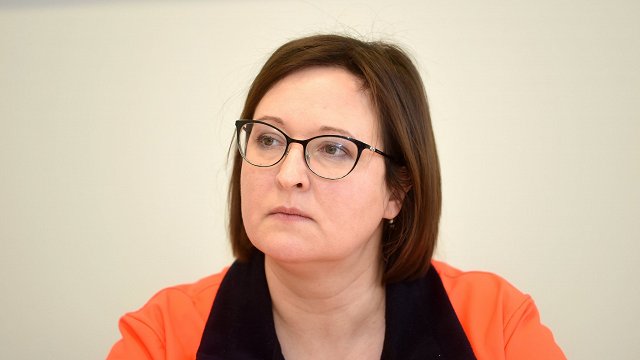The Disease Prevention and Control Center does not yet have data for the past year, but previous figures show that 12 people died from drug overdose in 2019, 21 people in 2020, and 17 people died in 2021.
Jānis Skrastiņš was deep into alcohol and drug addictions for twenty years. He started using in adolescence, and only now, for the last five years, has been clean.
“I myself have experienced clinical death, overdose, suicide attempt, my heart has stopped. [..] People have died next to me, who I've tried to resuscitate. All these things, no matter how strange it sounds, they didn't stop me. I was stopped by fatigue from life, from this life, I was exhausted from trying to salvage something all the time with my own methods, and I didn't know anymore, I had to give up somehow. And I started asking for help,” Skrastiņš said.
Now, for a couple of years, he has been trying to help others – traveling around schools to tell about addictions and their prevention – and also helping those who want to get rid of addictions. The process is not helped by drug availability. They can now be ordered and received without leaving the house.
“If there's [the communication app] Telegram, now young people don't even have to leave the house, sometimes [the substances] drop into your mailbox. So, of course, when something small begins, whether a conflict at home or [..] something happens at school, and I can't handle my feelings — perhaps that moment, yes, if I have Telegram, one tap and I have [drugs] at home. Yes, of course, it makes it easier,” Skrastiņš said.
Medical workers raise alarm that the number of drug-related calls has risen rapidly. An increasing number of overdose cases is observed, including fatal outcomes.
A couple of examples from emergency calls this year:
Woman, 35 years old. Lying unconscious in the supermarket toilet, a syringe next to her. Paramedics try to reanimate her for half an hour. Failed.
Young man, 17 years old. His grandfather found him lying unconscious in his room. Two medical brigades have been fighting for a long time. He's not breathing yet on the way, is brought into the hospital in a very severe state, with little prospect of recovery.
“We give antidotes in ever-larger quantities because the synthetic drugs they use are such that simple naloxone does not help anymore. Let's not say it doesn't work, but rather those synthetic substances that are mixed, they're already in higher quantities than the basic substance. And this means that it may be more common to have fatal outcomes,” said Liene Plēsuma, assistant doctor of the Emergency Medical Service (NMPD).
In the first three months of the year, at least four people have died due to drug overdose. NMPD data show that the number of calls for drugs has increased by up to a third. Moreover, young people under the age of 24 are now found more frequently. If there were 390 calls in 2019 to cases related to drug use in youth, there were 609 last year.
In severe cases, synthetic drugs from the opioid group are mostly to blame. It was previously fentanyl, but now the niche has been rapidly taken over by the substances of the new nitazene derivatives group. Their content and concentration tend to be unpredictable, leading to very dangerous situations. Both doctors and the police are warning the public about this.
“A completely new chemical formula has now emerged. Derivatives of the so-called nitazene group, which is extremely dangerous because it is incomprehensible [..], because it is often not thoroughly mixed, and thus there is a very high concentration of these opioids or nitazene derivatives [..] And according to the studies that I have seen and read - they believe it is about 20 times stronger than fentanyl, which was very popular a few years back,” said Astrīda Stirna, head of the Rīga Psychiatric and Narcology Centre (RPNC) Narcological Assistance Service.
NMPD's medic Plēsuma said that they can see where and what quality substances have been brought in by the intensity of calls.
According to police data, the most commonly identified drug in Latvia is marijuana. It was removed twice as often last year than psychotropic drugs in the second place. Amphetamine comes next and is followed by the new synthetic opioids.
Conversely, opposite trends are seen in the number of drug-related crimes. It has halved compared to the time before the pandemic. If around 2,500 such crimes were registered in 2018 and 2019, only slightly more than 1,000 last year were recorded, according to State Police data.
“No, we're not saying that there are fewer drugs, we're saying that [crime] has become less visible,” said Sandis Radziņš, chief of Division 2 of the State Police's Organized Crime Control.
Years of Covid constraints have made the drug business even more latent.
“Unfortunately, these chats are quick to be created, it takes a few seconds – there is this circle of people who immediately get involved, it's not a problem. And also by suspending some known groups and these members of the group, we understand that this communication was purely within the group, and then after two minutes, there is a new group. In fact, this is an unsolved problem at the moment, but it has a real impact on the statistics," said the police spokesman, Radziņš.




























